
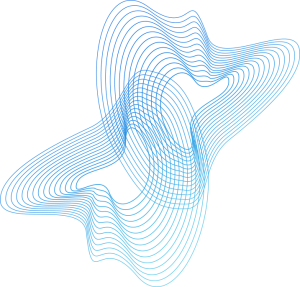
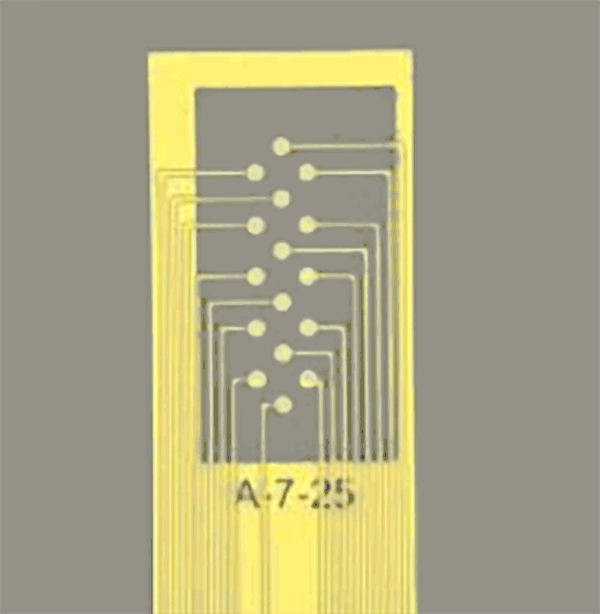


BY RESEARCHERS, FOR RESEARCHERS
Coming in 2026: Sapphire Optrodes
PopNeuron introduces advanced “transparent” optrodes, seamlessly integrating electrophysiology recording with optogenetic stimulation. Crafted on a sapphire substrate with embedded high-brightness blue light LEDs, these optrodes offer a robust and efficient solution for simultaneous neural activity recording and light-based neuron manipulation. This unique design allows for customizable arrangements of recording and LED sites to suit specific research needs, enhancing experimental flexibility and precision.
Available in 2026. Sign up below to get notified when available.
Unified Precision in Neuroscience
- Integrated Design: Combines recording channels and LED light sources on a single sapphire substrate for simultaneous neural recording and optogenetic stimulation.
- Durable and Versatile: Sapphire’s mechanical strength allows for repeated use without degradation, while its transparency ensures optimal light delivery.
- Custom Configurations: Available in various channel configurations with ~480nm LEDs for activating channelrhodopsins and future versions planned for inhibitory optogenetics.
- Efficient Light Delivery: Ensures that all light directly illuminates the brain tissue, maximizing stimulation efficiency without loss at optical interfaces.
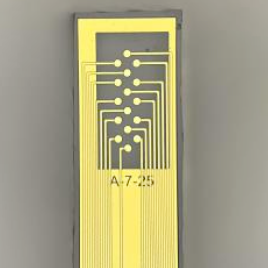
Unlimited options control location and size of recording sites
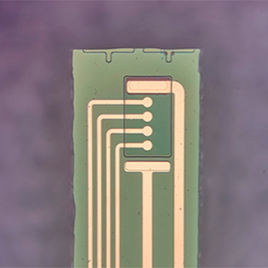
Sapphire glass allows for LED light to propagate in both directions

Integrated pre-amp for low noise recordings.
What We’re Offering
What Makes Us Different
PopNeuron’s advanced technology overcomes traditional neuroscience tool limitations, offering innovative, automated, high-precision targeting with enhanced accuracy, reproducibility, and global consistency through a collaborative, cloud-based platform for diverse research needs.

- Overcomes Traditional Limitations
- Innovative Integration of Technology
- Enhanced Accuracy and Reproducibility
- Automated Calibration and Consistency
- Collaborative and Versatile Platform
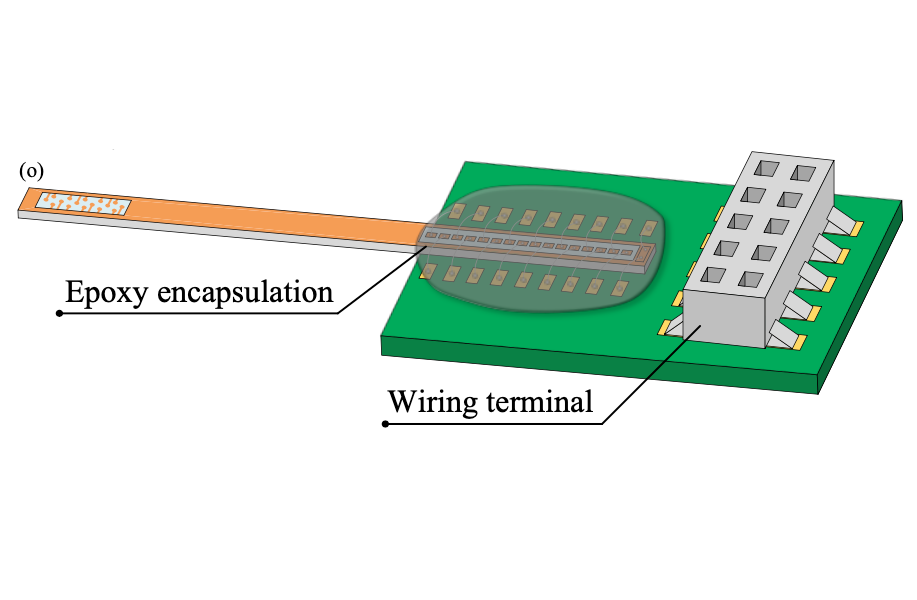
Transparent Sapphire Optrodes
Electrodes record electrical activity from the brain. This is a very important first step in understanding how the brain works, because the brain processes information by sending small electric events called action potentials or spikes between neurons. Understanding how these electrical events relate to brain function is one of the main approaches to understanding how the brain works.
Brain cells can also be controlled with light. While these cells are not naturally light sensitive, this property can be introduced with genetic manipulations. Through the introduction of different genes, neurons express light sensitive excitatory or inhibitory channels and other proteins. With these, neurons can be turned on or off with different light of different wavelengths (colors). Once these channels are in the neuron and ready to go, the next challenge is to find methods to get the appropriate light into the brain and to the correct location at the correct time. This can be done with optical fibers connected to lasers or LEDs that are advanced into the brain. An optrode is a combination of an electrode and a light source (an optical device) and allows an investigator to record neural activity and at the same time send light stimuli into the brain during an optogenetic manipulation. The simplest way to do construct an optrode is to attach an optical fiber to an electrode and connect that fiber to a light source at the other end. More sophisticated approaches involve an LED directly placed inside the brain, directly next to the recording site(s). Both techniques require significant manipulation by the users and proper equipment and skills are required to create these custom optrodes.
At PopNeuron, we fabricate our “transparent” optrodes by laying an array of recording channels on a sapphire substrate. Subsequently, one or more high-brightness blue light LEDs are grown directly on top of the sapphire substrate, creating a durable and user-friendly optrode for simultaneous electrophysiology recording and optogenetic stimulation. The advantage of this approach is that arbitrary arrangements of recording sites and LED sites can be designed, which is important for complete and more uniform illumination of brain areas with challenging layouts. Technical fact: Most semiconductor-based neural recording probes use silicon as their substrate. However, silicon’s low mechanical strength makes these probes brittle and prone to breakage during insertion into or extraction from the brain tissue. Additionally, silicon does not fluoresce, making it challenging to grow LEDs directly on silicon-based neural probes. This necessitates flat-mounting external LEDs or integrating external optical fibers into the optrode for optogenetic stimulation. By contrast, sapphire boasts greater mechanical strength, allowing for multiple insertions and extractions into/from brain tissues without affecting the quality of the recording. Furthermore, sapphire is transparent and its mechanical properties allow LEDs to be grown directly on the sapphire substrate, significantly reducing the complexity of creating these optrodes. Sapphire’s unique optical transparency facilitates optogenetic stimulation of neurons, even if located on the backside of the optrodes, providing greater flexibility for experimental designs.
The illumination intensity is between 5 and 10 mW (keep in mind that ALL that light illuminates brain tissue, there are zero losses at optical fiber interfaces etc) and the recording sites can be manufactured with different resistances which are typically in the low MOhm range. Our initial transparent sapphire optrodes come in 1, 4, and 16 recording channel configurations, with a ~480nm LED for optogenetic stimulation of most channelrhodospins. Future optrodes will offer higher channel configurations and ~580nm LEDs for optogenetic inhibition through halorhodpsin, as well as multiple configurations.
Related publications see below.
Documentation & Downloads
none until release
Double-Sided Sapphire Optrodes with Conductive Shielding Layers to Reduce Optogenetic Stimulation Artifacts. Junyu Shen, Yanyan Xu, Zhengwen Xiao, Yuebo Liu, Honghui Liu, Fengge Wang, Chaokun Yan, Liyang Wang, Changhao Chen, Zhisheng Wu, Yang Liu, Peng Un Mak, Mang I. Vai, Sio Hang Pun, Tim C. Lei and Baijun Zhang Micromachines 2022, 13, 1836. https://doi.org/10.3390/ mi13111836
Sapphire-Based Optrode for Low Noise Neural Recording and Optogenetic Manipulation. Yanyan Xu, Ben-Zheng Li, Xinlong Huang, Yuebo Liu, Zhiwen Liang, Xien Yang, Lizhang Lin, Liyang Wang, Yu Xia, Matthew Ridenour, Yujing Huang, Zhen Yuan, Achim Klug, SioHang Pun, Tim C Lei, Baijun Zhang. ACS Chemical Neuroscience 16: 628-641, 2025. https://pubs.acs.org/doi/10.1021/acschemneuro.4c00602
Terms and Conditions
Please read these Terms and Conditions (“Terms”, “Terms and Conditions”) carefully before using the website and purchasing any products from PopNeuron LLC (“us”, “we”, or “our”).
- Agreement to Terms
By accessing or using our website and purchasing any products from us, you agree to be bound by these Terms. If you disagree with any part of the terms, then you may not access the website or initiate a purchase.
- Products
- Our products are intended for use in accordance with applicable regulations and guidelines. It is your responsibility to ensure that the products purchased are suitable for your intended use.
- We strive to accurately represent our products, including descriptions, images, and specifications, but we do not guarantee that such information is complete, current, or error-free.
- Orders and Payment
- By placing an order through our website, you warrant that you are legally capable of entering into binding contracts and that all information you provide is accurate and complete.
- Prices for our products are subject to change without notice. We reserve the right to modify or discontinue any product at any time without prior notice.
- Payment must be made in full at the time of purchase. We accept various forms of payment as indicated on our website.
- Shipping and Delivery
- We aim to ship orders promptly; however, delivery times may vary depending on factors beyond our control. We are not liable for any delays in delivery.
- Risk of loss and title for products purchased from us pass to you upon delivery of the items to the carrier.
- Returns and Refunds
- Please refer to our Warranty and Return Policy [link] for information on returns and refunds.
- Warranty
- Our products may be subject to warranties provided by the manufacturer. Please refer to the specific product documentation for warranty details, as well as our Warranty and Return Policy [link].
- Limitation of Liability
- In no event shall PopNeuron LLC, nor its directors, employees, partners, agents, suppliers, or affiliates, be liable for any indirect, incidental, special, consequential, or punitive damages, including without limitation, loss of profits, data, use, goodwill, or other intangible losses, resulting from (i) your access to or use of or inability to access or use the website; (ii) any conduct or content of any third party on the website; (iii) any content obtained from the website; and (iv) unauthorized access, use, or alteration of your transmissions or content, whether based on warranty, contract, tort (including negligence), or any other legal theory, whether or not we have been informed of the possibility of such damage, and even if a remedy set forth herein is found to have failed of its essential purpose.
- Governing Law
- These Terms shall be governed and construed in accordance with the laws of Colorado, without regard to its conflict of law provisions.
- Changes to Terms
- We reserve the right, at our sole discretion, to modify or replace these Terms at any time. If a revision is material, we will try to provide at least 30 days’ notice prior to any new terms taking effect. What constitutes a material change will be determined at our sole discretion.
- Contact Us
- If you have any questions about these Terms, please contact us at frontdesk@popneuron.com.
By using our website and purchasing our products, you acknowledge that you have read, understood, and agree to be bound by these Terms and Conditions.

